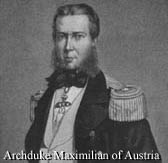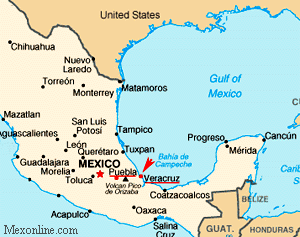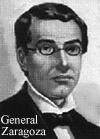 The holiday of Cinco De Mayo, The 5th Of May,
commemorates the victory of the Mexican militia over the French army at
The Battle Of Puebla in 1862. It is primarily a regional holiday
celebrated in the Mexican state capital city of Puebla
and throughout the state of Puebla, with some limited recognition in
other parts of Mexico, and especially in U.S. cities with a significant
Mexican population. It is not, as many people think, Mexico's Independence Day, which is actually September 16.
The holiday of Cinco De Mayo, The 5th Of May,
commemorates the victory of the Mexican militia over the French army at
The Battle Of Puebla in 1862. It is primarily a regional holiday
celebrated in the Mexican state capital city of Puebla
and throughout the state of Puebla, with some limited recognition in
other parts of Mexico, and especially in U.S. cities with a significant
Mexican population. It is not, as many people think, Mexico's Independence Day, which is actually September 16.
The battle at Puebla in 1862 happened at a violent and chaotic time in Mexico's history. Mexico had finally gained independence from Spain in 1821 after a difficult and bloody struggle, and a number of internal political takeovers and wars, including the Mexican-American War (1846-1848) and the Mexican Civil War of 1858, had ruined the national economy.
|
| ||
Siimilar debt to the U.S. was previously settled after the
Mexican-American War. France was eager to expand its empire at that
time, and used the debt issue to move forward with goals of establishing
its own leadership in Mexico. Realizing France's intent of empire
expansion, Spain and England withdrew their support. When Mexico finally
stopped making any loan payments, France took action on its own to install Napoleon III's relative, Archduke Maximilian of Austria, as ruler of Mexico.

|
||

| ||
Unfortunately, the victory was short lived. Upon hearing the bad news, Napoleon III had found an excuse to send more troops overseas to try and invade Mexico again, even against the wishes of the French populace. 30,000 more troops and a full year later, the French were eventually able to depose the Mexican army, take over Mexico City and install Maximilian as the ruler of Mexico.
Maximilian's rule of Mexico was also short lived, from 1864 to 1867. With the American Civil War now over, the U.S. began to provide more political and military assistance to Mexico to expel the French, after which Maximilian was executed by the Mexicans - his bullet riddled shirt is kept at the museum at Chapultepec Castle in Mexico City. So despite the eventual French invasion of Mexico City, Cinco de Mayo honors the bravery and victory of General Zaragoza's smaller, outnumbered militia at the Battle of Puebla in 1862. Until next time, keep it clean with that Azuma Leasing washer and dryer :)






No comments:
Post a Comment